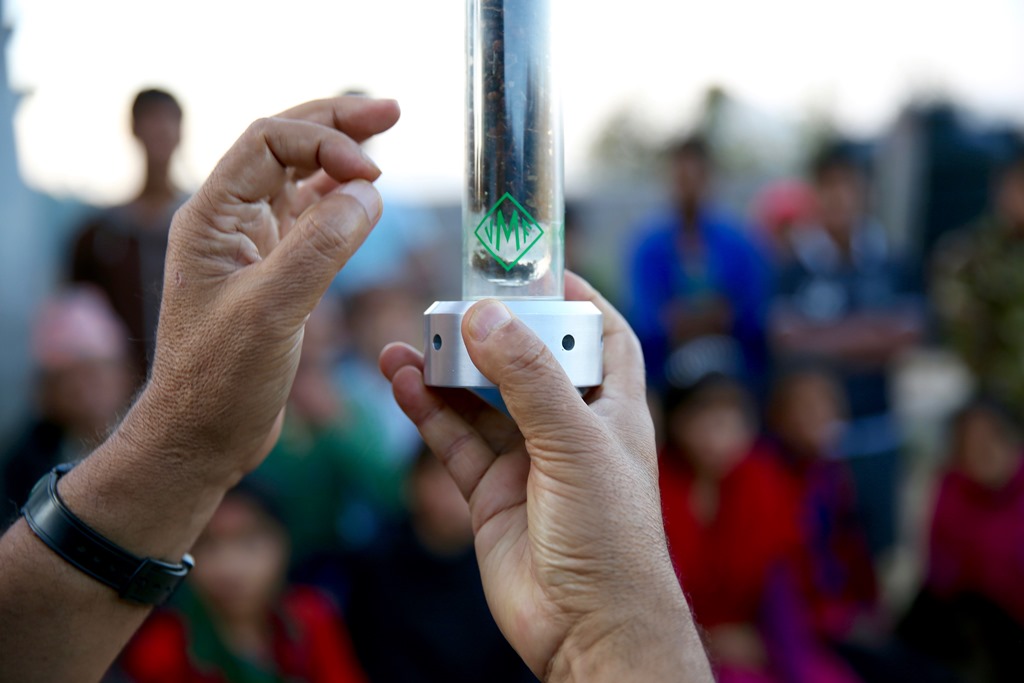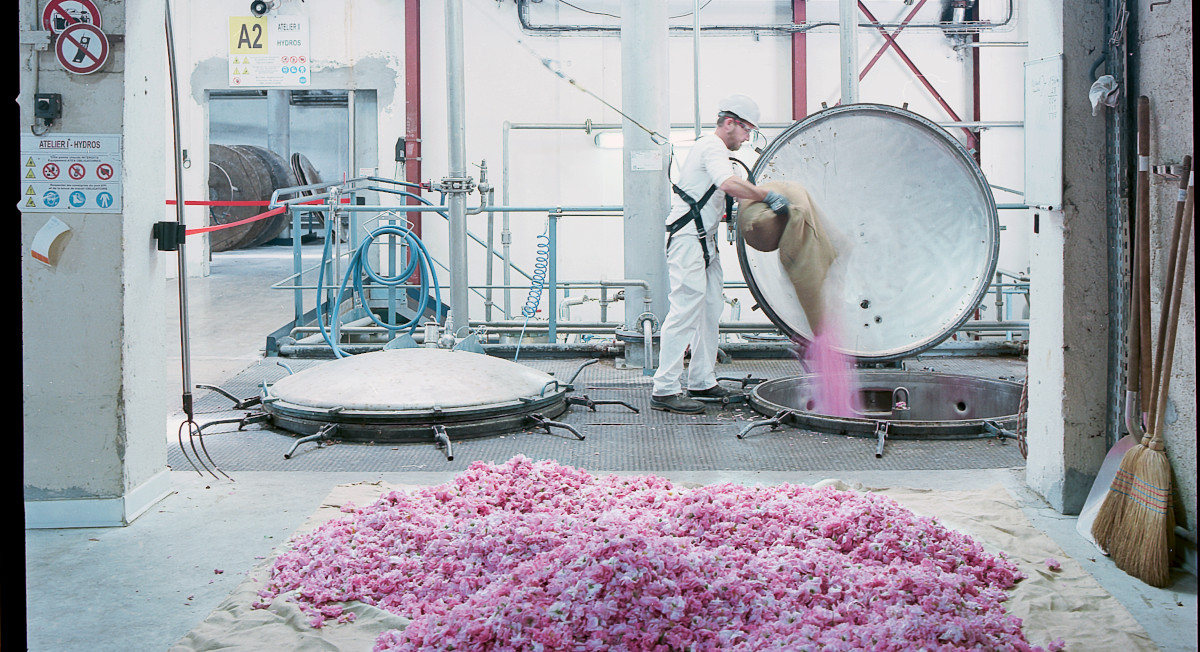Cette publication est également disponible en :
![]() Français
Français
This article was published in partnership with Mane.
Whether it’s red seaweed, coconut, coffee bean or everlasting flower, these speciality fragrances produced by French fragrance company Mane are enriching the perfumer’s palette with unprecedented realism.
Who can resist the warm, honeyed, comforting aroma of gingerbread?
Up until now, perfumers could reconstitute this delicious scent by assembling different ingredients to create an accord, but It was impossible to obtain an essential oil or an absolute that replicated the scent exactly.
The development of supercritical CO2 extraction over the past twenty years has been a game changer. The perfumers working for Mane now have a Gingerbread Jungle Essence. This innovation has also made possible the extraction of everlasting flower, eucalyptus and lavandin. How are they doing it? Mathilde Voisin, Ingredients Marketing Manager, explains: “The ingredients are extracted using a gas which is cooled to a temperature and pressure that takes it beyond what we call the critical point. The gas reaches a pivotal point in between its gas and liquid state, which is called supercritical. It is then used as a solvent to draw out the odorous molecules of the ingredient.”
Ingredients with a low water content are particularly well-adapted to this extraction method. For example, cardamom, vanilla, ginger, pink peppercorn, orris and red seaweed can be used to extract Pure Jungle Essences. Other more aqueous ingredients, such as raspberry, pineapple or green pepper, may require the use of a co-solvent. These are called Neo Jungle Essences. In total, around forty extracts have been created, representing a large percentage (8 to 10 %) of the natural raw materials that perfumers have at their disposal. These extracts are also used by flavourists working in the food industry.
Jungle Essences bring unprecedented realism to the perfumer’s palette, making them a precious tool for stimulating their creativity. Although a rose essence or a jasmine absolute are very different from the scents of the real flowers, Jungle Essences are particularly close to the original ingredients. Mathilde Voisin explains: “We work at a low temperature so the odorous molecules are not denatured, and we can obtain a more complex, multifaceted extract than those produced by other methods.” All facets of the ingredient are perceptible, from the top notes to the base notes, whereas an essential oil highlights the top notes and an absolute tends to draw out the base notes. Juniper berry, which is usually very terpenic [smelling of pine and camphor], now unveils fresh, punchy, fruity notes. Eucalyptus no longer smells medicinal but reveals its brighter side, smelling almost like blackcurrant, the perfume of Mediterranean landscapes.
Revealing new facets of raw materials also makes it possible to reinvent perfume classics. “Lavender is a very good example,” Julie Massé, perfumer at Mane, points out. “It’s delicious, a lot more floral, and more coumarin, without the notes of the stalk, or the hay smell which appears with other extraction methods. This gives the scent cachet and you can understand the appeal of this innovative technology.” As a bonus, the sense of familiarity is often attractive to consumers. Serge Majoullier, Senior Perfumer at Mane and Jungle Essence expert, explains: “The general public often find it difficult to smell all the different facets of a perfume but if one of the components is familiar, it is easier to understand and to memorise the scent”.
What Jungle Essence brings to the industry is even more interesting because it makes possible the extraction of scents from ingredients that were impossible to extract up until now, such as fruit. Julie Massé reminds us: “Blackcurrant bases have existed for a long time, but they were composed of synthetic ingredients, or there was an absolute of the fruit’s bud which was very different, greener and more sulphurous. However, we didn’t have a natural extract for this fruit.” This shortcoming has now been addressed with the arrival of a plump and juicy extract which takes centre stage in different variations of Sì, a perfume Massé created for Giorgio Armani. Mouth-watering, without being gourmand, it brings texture to this fruity accord, which we wouldn’t find in a synthetic scent.
The perfumers’ palette now includes manufactured products, such as the famous gingerbread Jungle Essence mentioned earlier. Serge Majouillier tells us: “We worked with a chef to develop the perfect recipe, ensuring we had the perfect balance of spices and a high-quality honey, and we removed or reduced the quantities of butter and sugar which don’t contribute much to the overall aroma.” The gingerbread was then cooked, broken down into crumbs and extracted using the supercritical gas and a co-solvent. “It produced an exceptional extract,” the perfumer tells us enthusiastically. “Baking causes the Maillard reaction. This aroma of baked sugar and butter is one of our culinary references. We captured something close to reality.” This new kind of natural extract can be used alone, but also to highlight a spicy accord, without necessarily smelling of gingerbread. In the same way, the Coconut Jungle Essence could accompany white flowers without necessarily bringing a tropical scent. Julie Massé explains: “It adds the plump notes of the petals and smells divine. We can use it to enhance another idea, without making it the star note of the perfume.”
Jungle Essence is specific to Mane, allowing the company to stand out among its competitors by producing speciality extracts, akin to captive ingredients [exclusive ingredients which are not available commercially]. Mathilde Voisin tells us, “We have a real expertise in the field. A whole team at Mane is devoted to Jungle Essence, working on product sourcing, perfumery, research and development, and production. We are able to adjust all variables in order to obtain the precise result we are looking for”.
In addition to all of this, Jungle Essence follows the guidelines of green chemistry and has a limited impact on the environment, so the products meet the new expectations of brands and consumers. Could this be the ideal extraction method? It is important to point out that it can’t be used for all ingredients, even if the Neo Jungle Essences do open up more possibilities. Furthermore, this technology requires significant investment and expensive equipment. Serge Majoullier explains: “When deciding whether we should create a new Jungle Essence, we have to weigh up all these factors and see if the added olfactory value justifies creating the product.”
In order to try out new ingredients which could add value to a composition, Mane has created an innovative portable version of its equipment. “Wherever we are on the planet, if an ingredient seems promising, we can obtain 0.5 to 1 ml of its extract in just 30 minutes and see if it interests us. Then the scent produced using the portable kit can be reproduced on an industrial scale with exactly the same olfactory profile,” Mathilde Voisin concludes. Enough to bring back tomorrow’s raw material from all over the world.






Comments